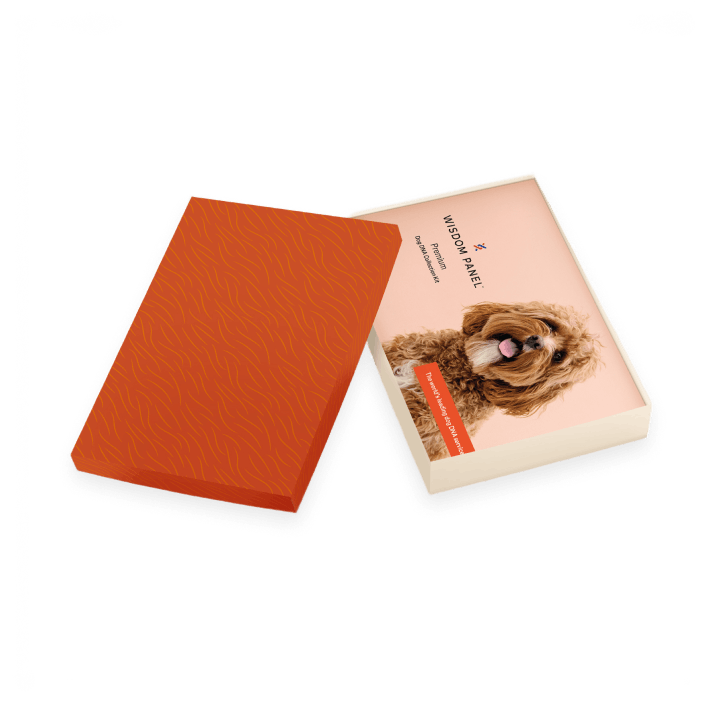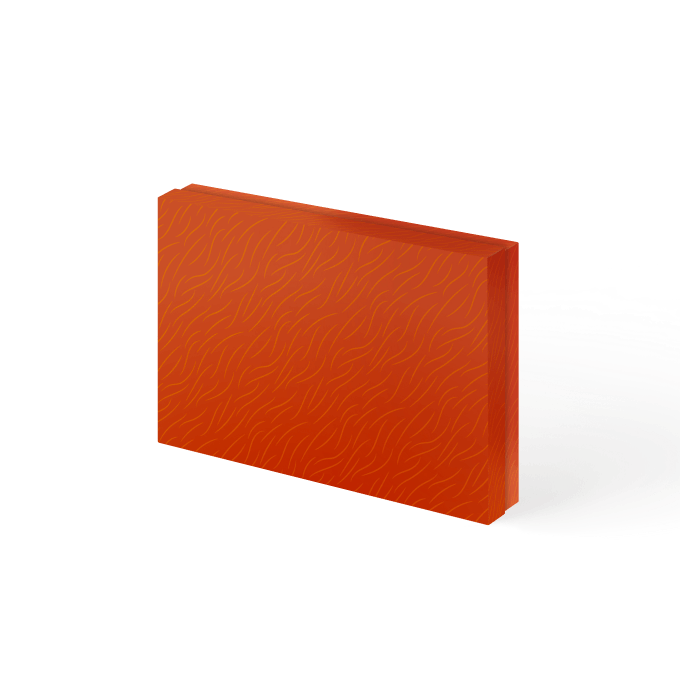
Irish Wolfhound
A large, powerful sighthound, the Irish Wolfhound is a superb athlete. Despite its size, this breed is quite calm and loving, considering its potential to stand three feet tall and up to 180 lbs. Each Irish Wolfhound has an individual personality, but in general they provide rewarding companionship when cared for properly.
Interested in discovering if your dog is an Irish Wolfhound?
Check out Wisdom Panel's DNA tests.

Irish Wolfhound Traits
General Appearance
Males have the potential to reach almost three feet tall and 180 pounds, with females not far behind. This makes them huge for a sighthound. Their size and shape—which is characteristic of a Greyhound—is commandeering. This can sometimes make them seem intimidating, particularly combined with the rough, wiry coat.
Coat and Colouring
Irish Wolfhounds have a shaggy coat in a range of colors including fawn, black, red, gray, brindle, and pure white.
Distinctive Physical Traits
A galloping beast of huge proportions, the Irish Greyhound has astonishing strength and speed. Built with the distinct curves of a large muscular Greyhound, the Irish Wolfhound looks like a natural born athlete.
Irish Wolfhound Temperament
Despite this breed’s great size, the Irish Wolfhound is a gentle and dignified dog. They offer a wonderful, comforting element to any family, responding best to a loving, sensitive environment. The breed’s individual and intelligent personalities require constant human companionship, and they do not do well if crated daily by a busy owner.


Irish Wolfhound History
A breed born from the coursing hounds found in the Middle East and the large native dogs of Britain, the Irish Wolfhound is a powerful and resilient hunter. Dating all the way back to ancient Antiquity, these dogs were used to hunt the ancient wild elk of Ireland.
As wolves became more of a nuisance in Ireland in the 15th century, Irish Wolfhounds became specialized in hunting wolves, which is when their name became the Wolfhound. Sadly, after the breed effectively hunted their prey to extinction, the Wolfhound fell out of use, and they too almost went extinct as a breed.
Irish Wolfhounds were saved in 1862 by a captain in the British army, George Augustus Graham. It became his primary ambition to save the breed, which he did by gathering all of the known living dogs he could find. His name still receives high praise from any avid Irish Wolfhound fans.
Irish Wolfhound Care
Nutrition
Irish Wolfhounds require a high-quality dog food that is age-appropriate—whether it’s commercially manufactured or homemade (with a veterinarian’s supervision and approval). As with any dog, it’s important to monitor the amount of food and treats that you give your Irish Wolfhound, especially since they are prone to gaining weight as they age. Reduce the portions or restrict calories if your pup gains weight.
It is important to note that this breed can be susceptible to bloat. To help prevent bloat, break their food up into several meals a day, and use a food bowl that’s specially designed to slow their rate of eating. When timing meals, avoid feeding them immediately after any kind of vigorous activity, and wait at least an hour after meals before allowing them to run or exercise. These are just a few of ways you can help prevent this life-threatening condition. A veterinarian is the best resource for other recommendations, including surgical options, for preventing bloat.
Grooming
The Irish Wolfhound has a wiry coat that requires weekly grooming. They do have a tendency to shed, but not quite as bad as other breeds. Baths are also important.
All dogs require regular dental care, including at-home teeth brushing and professional dental cleanings, and Irish Wolfhound is no exception. Maintaining good dental hygiene is important for their overall long-term health.
Exercise
Daily exercise is essential to a healthy and happy Irish Wolfhound. Having a large, fenced area for them to gallop around in is also extremely important. They will give chase to anything they see, so they must be kept on a leash in an open environment. They also enjoy dog sports like lure coursing and tracking.
Training
They can be troublemakers as puppies, and they don’t mature until a year and a half or older. Irish Wolfhounds need a large space to roam and play. They are incredibly smart and will take to training well. They adore their human companions, and prove well suited as therapy dogs.

Irish Wolfhound Genetic Health Conditions
-
Startle Disease (Discovered in Irish Wolfhounds)
Startle Disease, also known as hyperekplexia, is a rare muscle cramping disorder. Signs of the disease can be seen in very young puppies, and include muscle stiffness and tremors when handled.
Knowing if your Irish Wolfhound is a carrier or at-risk for these conditions can help you and your veterinarian plan for your pup's lifelong care. With Wisdom Panel™ Premium, you can get results for over 200 genetic health tests.
Breed Group
Sighthound
The Sighthound Group consists of some of the oldest breeds often reserved for ownership by royalty. Sleek and built for speed and stamina, they share many of the same characteristics as those in the Sporting and Hound Groups.



























